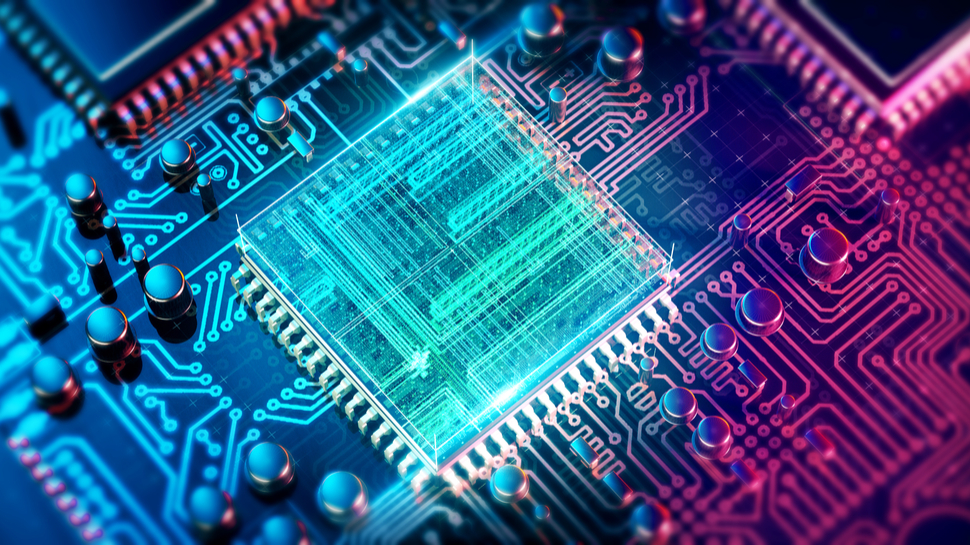Sorry, quantum computing isn’t as mind-blowing as you think
Why anyone can (and should) work in quantum computing

The world of quantum mechanics is strange. It’s a microscopic realm based on particles and probabilities where the act of observing a quantum system seems to cause it to change. Confused? You’re not alone. In 1964, Nobel prize-winning physicist Richard Feynman famously said: “Nobody understands quantum mechanics.”
Today, machines are now being developed to harness the strange world of quantum mechanics. Where traditional computers use bits – that are either a 0 or a 1 – quantum computers use qubits (quantum bits). And these can be anywhere between a 0 and a 1, at the same time.
Dr. Luuk Earl is a quantum engineer at quantum computing company Universal Quantum.
As a quantum engineer, that’s the world I live in. But my day-to-day work does not deal with a huge amount of quantum weirdness. Most of what I do is engineering, designing, and building these quantum computers to fulfill certain requirements. The only difference is that our team is making machines that have never been made before.
And that’s where the real complexity lies in quantum computing, not in the quantum mechanics working behind the scenes but in the bleeding-edge technologies under development. It’s also a really exciting time to work in the field of quantum computing.
I know it’s a cliché, but there’s not a typical day as a quantum engineer. My work can see me designing laser systems, talking to suppliers, performing physics simulations, and discussing quantum physics over ping pong with a colleague. Every day our understanding evolves and expands, bringing new challenges to tackle.
All together now
While I work as a quantum engineer, there are many other roles in the field of quantum computing – and you don’t necessarily need a degree in physics to help build these machines. (Disclaimer: I do have a Ph.D. in quantum technologies, but many of the team come from traditional tech backgrounds.)
Quantum computing is a huge interdisciplinary challenge where physicists and engineers must work together, bridging the gap between what’s theoretically possible in the world of quantum mechanics and actually possible in the real world. But getting these two groups to agree on the initial requirements of what they’re designing is often half of the battle.
Physicists want everything to be ideal. Engineers need to design and build practical solutions. The difficulty is finding specifications that both accept – and that’s another part of the work I do. We all have the same goal to make the best quantum computer, so I collaborate closely with engineers so we both understand what is critical for our qubits and what is possible in hardware. A lot of this is modeling and simulation to see how hardware parameters affect our quantum system. It is really exciting as a physicist to have access to state-of-the-art engineering.
When those compromises between the physicists and engineers are reached, then the actual nuts and bolts of making the components of a quantum computer are very much like plumbing. I connect things, meet requirements, and stick stuff together. The names of those things are different from a quantum computer compared to a traditional one – but the skills you need are the same for any engineering job.
That’s not to say building a quantum computer is easy. Compared to building traditional computers, the real difficulty for engineers like me lies in the sensitivity of the qubits. Everything is designed to not interact with the quantum state, hence why we need vacuums, low temperatures, and ultra-low noise electronics.
And it’s these qubits (and maintaining their fragile quantum states) that’s the crux of the issue. While today’s quantum computers have provided vital proof of concepts, they only have a few dozen qubits (or quantum bits). We need to reach the million-qubit scale to unlock the true potential of quantum computing – which is a monumental engineering challenge.
There are many theories about how to build a million-qubit machine. The Universal Quantum team, where I work, is maintaining an engineering focus, working with a practical blueprint that promises to deliver millions of qubits by overcoming the major barriers to large-scale quantum computing.
The power of many minds
We’re now at an exciting point in our work where many of the physics problems to build a quantum computer are now broken down into engineering problems. Work is underway to build tomorrow’s quantum computers with private businesses and governments investing heavily in this promising technology.
That’s why it’s so important that people forget all previous misconceptions surrounding quantum mechanics and change their mindset about quantum computing. Because to make the world’s most powerful computers, we’re going to need to embrace the power of many minds.
Whether or not all those minds want to fully understand the strange world of quantum mechanics may not matter. Because if no one truly understands quantum mechanics, then no one person could ever understand all there is to make a quantum computer. It’s a team effort.
Are you a pro? Subscribe to our newsletter
Sign up to the TechRadar Pro newsletter to get all the top news, opinion, features and guidance your business needs to succeed!
Dr. Luuk Earl is a quantum engineer at quantum computing company Universal Quantum.